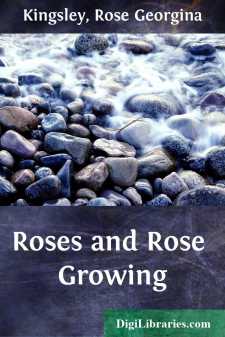Categories
- Antiques & Collectibles 13
- Architecture 36
- Art 48
- Bibles 22
- Biography & Autobiography 813
- Body, Mind & Spirit 142
- Business & Economics 28
- Children's Books 17
- Children's Fiction 14
- Computers 4
- Cooking 94
- Crafts & Hobbies 4
- Drama 346
- Education 46
- Family & Relationships 57
- Fiction 11829
- Games 19
- Gardening 17
- Health & Fitness 34
- History 1377
- House & Home 1
- Humor 147
- Juvenile Fiction 1873
- Juvenile Nonfiction 202
- Language Arts & Disciplines 88
- Law 16
- Literary Collections 686
- Literary Criticism 179
- Mathematics 13
- Medical 41
- Music 40
- Nature 179
- Non-Classifiable 1768
- Performing Arts 7
- Periodicals 1453
- Philosophy 64
- Photography 2
- Poetry 896
- Political Science 203
- Psychology 42
- Reference 154
- Religion 513
- Science 126
- Self-Help 84
- Social Science 81
- Sports & Recreation 34
- Study Aids 3
- Technology & Engineering 59
- Transportation 23
- Travel 463
- True Crime 29
Roses and Rose Growing
Description:
Excerpt
CHAPTER I
MAKING AND PLANTING A ROSE GARDENHappy is the rosarian who is free to choose the spot in which to make his rose garden—to choose the ideal position, with ideal soil, in an ideal climate. Such fortuitous combinations are possible. But though they do not fall to the lot of one rose-lover in a hundred, it is still easy to find a bit of ground in which roses will flourish; for, with proper care, there are few localities—in England at all events—where they cannot be made to grow. At the same time, in choosing the position of our rose garden, certain dangers must be guarded against, as far as possible.
Position.—First of all I would say, avoid a draughty spot; for nothing is so bad for roses as a draught. Even an exposed garden, if it is quite flat and open, is preferable to a draughty one, however picturesquely shaded it may be. The perfect position should be sheltered from the north and east: but not closely surrounded by trees. For roses are lovers of light and sun; and while they enjoy a little shade for a few hours in the day, they will not flourish in stuffy, closely shadowed places, where they cannot get enough light and air.
Shelter.—If some sort of shelter is absolutely imperative, there are various ways of producing it without putting up an unsightly paling, or building a costly wall in the garden. One of the best is a low hedge kept closely clipped, of yew, holly, privet, or beech—the first is, of course, slow in growth. Care, however, must be taken to plant the hedge at such a distance from the rose beds that its roots shall not suck all the nourishment from them. But nothing is more charming or suitable than to give the choice and more tender roses a shelter of roses—planting the strong-growing Wichuraianas, Ramblers and other vigorous kinds along a screen of wooden lattice-work. This not only makes a quite sufficient break to the wind, but forms a delightful background to the beds of dwarf roses.
If possible, the ground should slope very gently to south and west. Flat ground is preferable to any slope steeper than one in fifty. But some slight fall is extremely advantageous, as it helps drainage.
Drainage.—This is another most important point to be considered. For whether the soil be light or heavy, it is absolutely essential that a rose garden should be well drained; as roses so deeply resent wet about the roots, that they promptly show their displeasure by dying. If, therefore, on low-lying land—and unfortunately we cannot always avoid this—there is any suspicion of water within three feet of the surface, broken crocks, clinkers, wood ashes, and such-like materials, must be placed at the bottom of the beds to keep the subsoil free in times of heavy rain and floods; and a good drain of ordinary field pipes must be run from the beds into the nearest ditch. For let it be remembered that if we intend to grow good roses, we must be prepared to do our very best for them, and to spend a little time, a little money, and a good deal of thought, on preparing the ground they are to grow in, before we dream of planting them....



